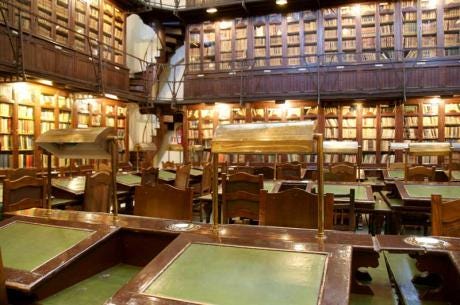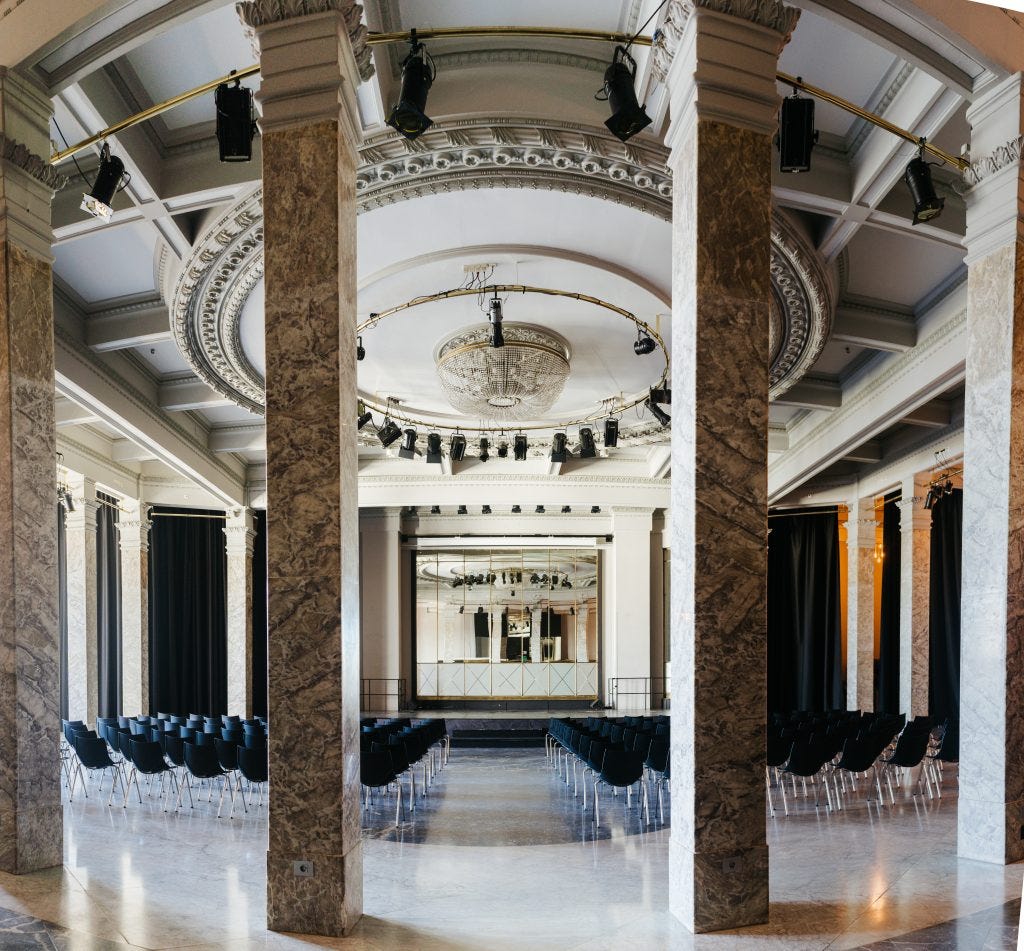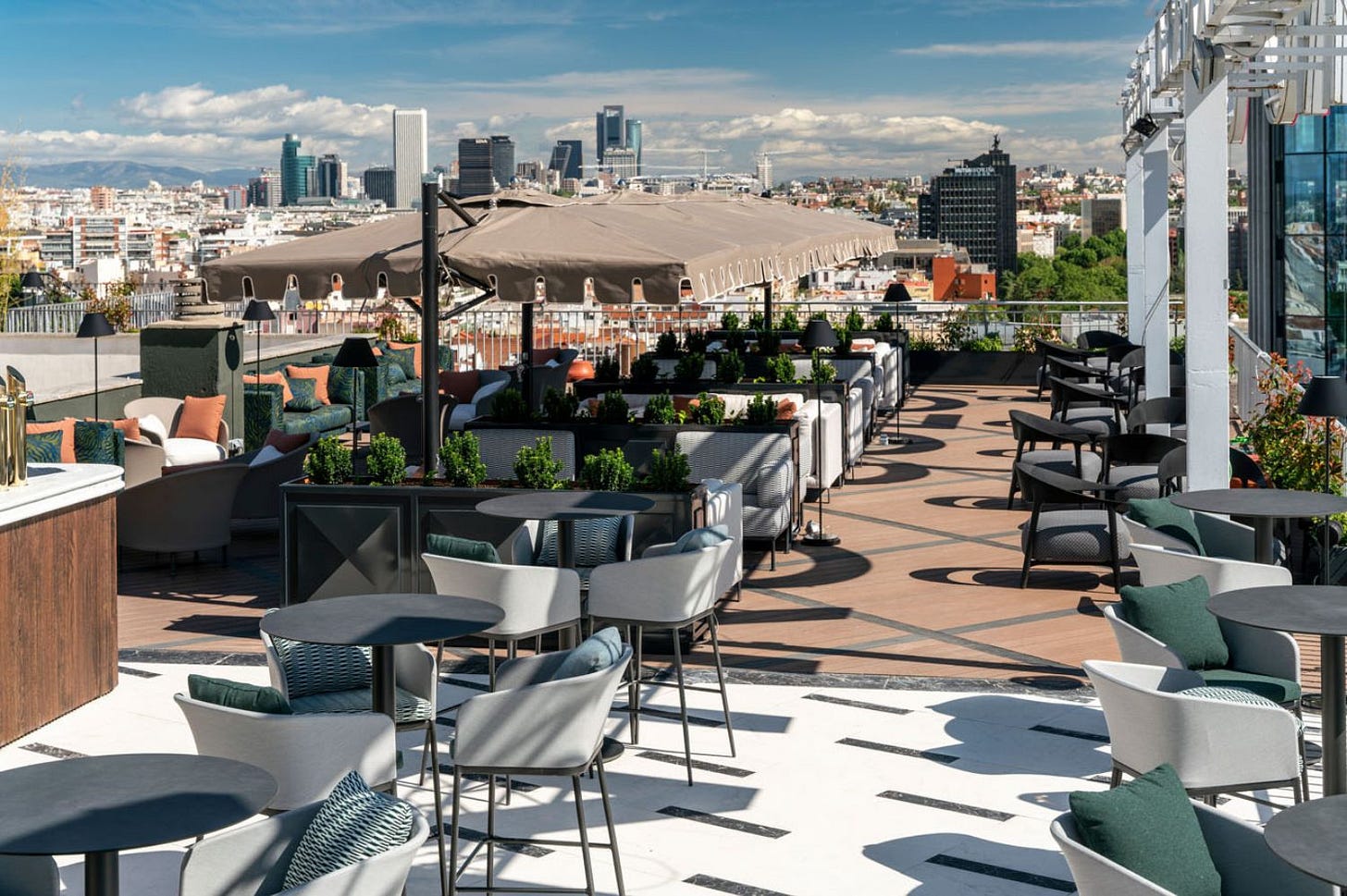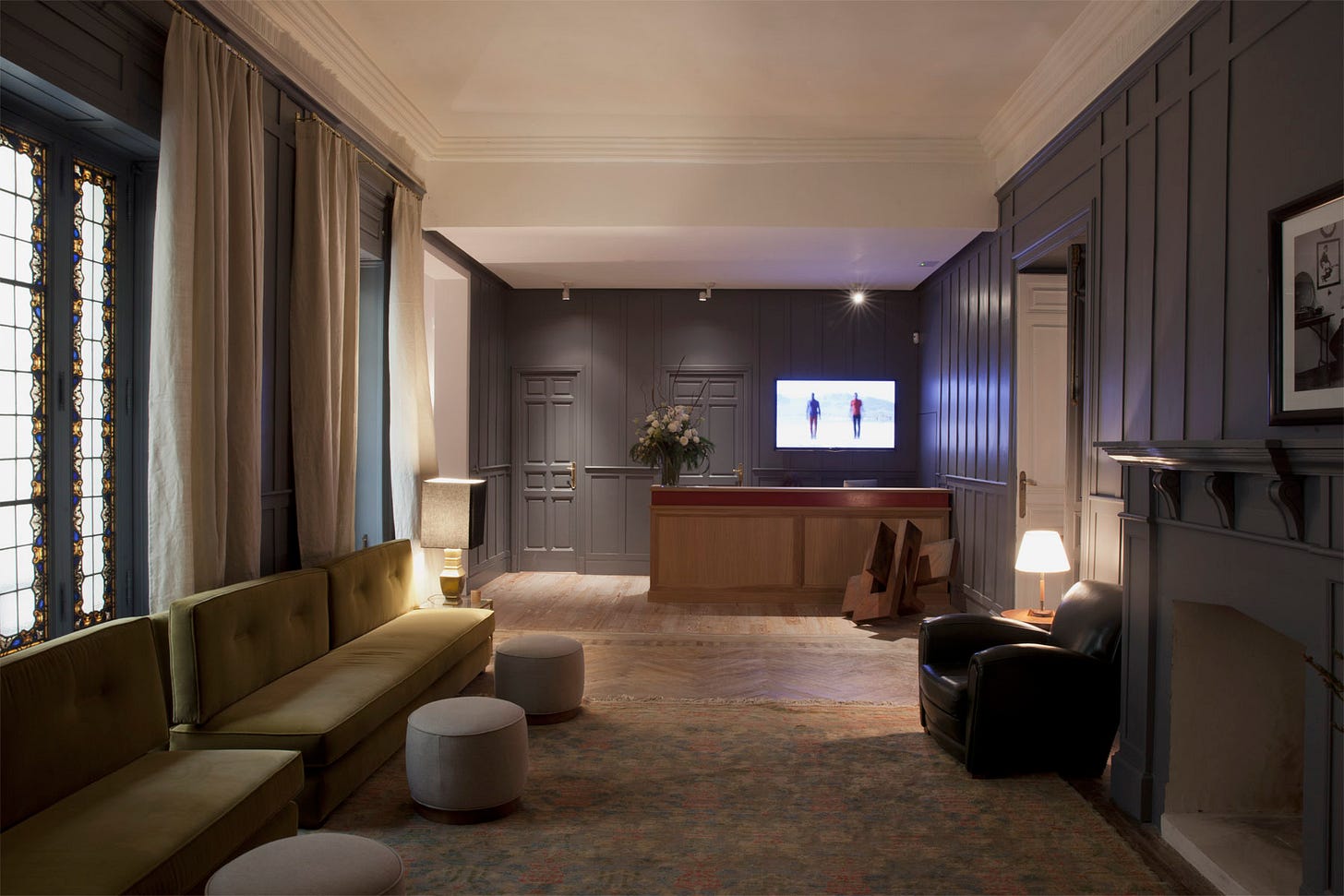Spain was a late adopter of clubs, compared to Anglosphere. The oldest club in the country, the Real Casino Antiguo in Castellón de la Plana near Valencia, dates to 1814, and a handful of clubs date to the 1830s (in Madrid and Cartagena) - but these were outliers. The first two Carlist Wars of the 1830s and 1840s were not conducive to setting up new clubs oacross the country.
Yet once clubs started to take root in Spain from the 1850s, they did so in a big way, becoming a major feature of Spanish municipal life; and most major provincial towns or cities to this day have at least one club.
Like the UK clubs, the Spanish clubs have suffered a high turnover, with some 90% of clubs having closed down - a very similar rate of attrition to London’s historic clubs. Yet the scale of Spanish Clubland was, and is, considerable. By the end of the 19th century, the country had some 1,500 major private members’ clubs, typically focused around either old money (aristocracy), or new money (industrialists). Today, some 150 survive. And the city centre of Madrid offers eight major clubs to this day.
The earliest clubs of Madrid
The biblioteca of the Ateneo de Madrid. (Photo credit: descubrir.com).
Madrid’s oldest club remains the Ateneo Científico, Literario y Artístico de Madrid (aka Ateneo de Madrid), founded in 1835. This was part of the wave of Athenaeums on both sides of the Atlantic which began with the Liverpool Athenaeum in 1797, and promulgated over the ensuing four decades, which were the first clubs to be centred around libraries, and which combined a focus on both the literary and the scientific. With the 1833-40 regency of Maria Christina of the Two Sicilies through the First Carlist Wars, the emphasis on Madrid was on liberalism, which suited the ethos of the Club. After a peripatetic existence in its first half-century, it settled on its present purpose-built building in 1884. The Ateneo de Madrid continues to this day, playing a semi-public role with exhibitions and lectures.
The grand staircase of the Casino de Madrid. (Photo credit: International Associate Clubs.)
Of a more avowedly social nature is the Casino de Madrid, founded in 1836. This was not a gambling casino, but a cultural casino of the type then popular in continental Europe. It was established to be avowedly apolitical - essential amidst the civil war then raging. Like the Ateneo, its beginnings were informal, moving between premises and changing names, including the Casino, and the Casino del Príncipe. It settled on its current beaux-arts building on Calle de Alcalá in 1910, with it becoming a heritage building in 1993. The restaurant on the fourth floor, which is open to the public at select times, is a Michelin-starred restaurant.
Between the second and third Carlist Wars
The lounge of La Gran Peña. (Photo credit: La Razón, credited to Cuauhtu Gutiérrez/ Book: La gran Peña 1869-2019.)
Considered the most socially prestigious of Madrid’s clubs, La Gran Peña (“The Great Rock”) was founded in 1869. Rather more political than the Casino de Madrid, its founders were heavily focused around the military and the country’s old aristocracy and royalty - and many of its members remain so to this day. The present building dates to 1915-6, though was subsequently remodelled several times, and was seized during the Spanish Civil War and Siege of Madrid. Unusually for a Spanish club, it provided its members with bedrooms - though this amenity was lost in 2010, with the creation of the adjoining hotel.
The ballroom of the Centro Cultural de los Ejércitos. (Photo credit: Federación Española de Círculos y Casinos Culturales website.)
Also emerging from the military tradition is the Centro Cultural de los Ejércitos (Cultural Centre of the Armies), founded in 1871. Membership remains restricted to the military, though the second-floor restaurant is open to the public, along with other parts like the gym and the fencing hall - which is the oldest in Europe. The beaux-arts building by Eduardo Sánchez Eznarriaga dates to 1916-8. It is one of the few Spanish clubs to offer its members bedroom accommodation.
Belle Époque clubs
A theatre in the Círculo de Bellas Artes. (Photo credit: Círculo de Bellas Artes website.)
Closer to a cultural institution than a club today, with a significant pulic-facing role, is the Círculo de Bellas Artes, which was founded in 1880. It is dedicated to the multidisciplinary arts, and as well as clubrooms for the members, it contains publicly-accessible facilities, including a library, cinema, exhibition rooms, concert halls, lecture halls, and artists’ workshops. Its building by Antonio Palacios was constructed in 1926.
Meeting room of the Círculo Valenciano. (Photo credit: Círculo Valenciano website.)
Less formal is the Círculo Valenciano, which has been meeting in Madrid since 1905. This takes the form of a cultural association for those with Valencian roots in the capital, and runs its own public-facing restaurant, with the members having use of three private meeting rooms upstairs.
Post-war clubs
In the aftermath of the Spanish Civil War, the Franco regime proved highly divisive for clubs. Spain’s Athenaeums found themselves under assault from the government (as hotbeds of undesirable intellectuals), as did those clubs with links to the old aristocracy. By contrast, clubs with links to the military, and clubs focused around the mercantile middle classes who provided a bedrock of support for Franco, found themselves flourishing. New clubs, however, did not tend to take off until the very final years of Franco’s rule, and clubs as a whole languished through much of his regime.
The rooftop terrace of the Club Financiero Génova. (Photo credit: Club Financiero Génova website.)
One survivor from these latter years of the Franco regime is the Club Financiero Génova, founded in 1973, along decidedly ambitious lines. This is a business club aimed at those working in the city’s financial sector. Founder members Juan Garrigues Walker and Antonio Muñoz Cabrero claimed inspiration from having visited clubs in London and New York where they found so much business being transacted, such as the Racquet and Tennis Club of New York City.
Modern clubs
The entrance to Club Matador. (Photo credit: Munich Hearthouse website.)
The recent global explosion in proprietary, for-profit clubs has not left Madrid neglected. Prominent among these are the Club Matador, which opened in 2013 as a social club in a converted Salamanca apartment, founded by the creators of Matador magazine; and the capital’s most recent addition, Forbes House, which opened in 2024 - this was also a spin-off from a magazine, with US-based Forbes magazine selecting Madrid for its first private members’ club.
Forbes House, Madrid - the capital’s newest club to have opened. (Photo credit: Financial Times.)
And finally, a few weeks ago, Soho House announced on their Instagram account that a Soho House Madrid would be “coming soon” - though with no further details, alongside the scores of other global Soho Houses that have been announced as “coming soon.”
You can view the full and varied backlog of Clubland Substack articles, by clicking on the index below.
Index
Articles are centred around several distinct strands, so the below contains links to the main pieces, sorted by theme.














👌
Interesting… you are in error re the Gran Pena with regard to rooms. I stayed there 20 years ago, and had one of the bachelor rooms. In 2010 (I believe) they sold off their rooms, and they now have hotel above them. I stayed at the hotel in 2019, when I used the Gran Peña’s facilities at the San Isidro festival.